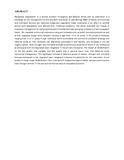Impact Of Enclosure Management On Soil Properties And Microbial Biomass In A Restored Semi-arid Rangeland, Kenya

View/
Date
2014-10Author
Mureithi, Stephen M.
Verdoodt, Ann
Gachene, Charles K. K.
Njoka, Jesse T.
Wasonga, Vivian O.
De Neve, Stefaan
Meyerhoff, Elizabeth
Van Rans, Eric
Language
enMetadata
Show full item recordAbstract
Rangeland degradation is a serious problem throughout sub-Saharan Africa and its restoration is a challenge for the management of arid and semi-arid areas. In Lake Baringo Basin of Kenya, communities and individual farmers are restoring indigenous vegetation inside enclosures in an effort to combat severe land degradation and address their livelihood problems. This study evaluated the impact of enclosure management on soil properties and microbial biomass, being key indicators of soil ecosystem health. Six reseeded communal enclosures using soil embankments as water-harvesting structures and strictly regulated access were selected, varying in age from 13 to 23 years. In six private enclosures, ranging from 3 to 17 years in age, individual farmers emulated the communal enclosure strategy and restored areas for their exclusive use. Significant decreases in bulk density, and increases in the soil organic carbon, total nitrogen and microbial biomass contents and stocks were found in the enclosures as compared with the degraded open rangeland. In the private enclosures, the impact of rehabilitation on the soil quality was variable, and soil quality was in general lower than that obtained under communal management. The significant increase of absolute stocks of carbon, nitrogen and microbial biomass compared to the degraded open rangeland indicates the potential for the restoration of soil quality through range rehabilitation. Over-sowing with indigenous legume fodder species could improve total nitrogen content in the soil and nutritional value of the pastures as well.
Citation
Stephen M. Mureithi, Ann Verdoodt, Charles K. K. Gachene, Jesse T. Njoka, Vivian O. Wasonga, Stefaan De Neve, Elizabeth Meyerhoff, Eric Van Ranst (2014). Impact of enclosure management on soil properties and microbial biomass in a restored semi-arid rangeland, Kenya. Journal of Arid Land, 6(5), pp. 561-570Publisher
University of Nairobi
